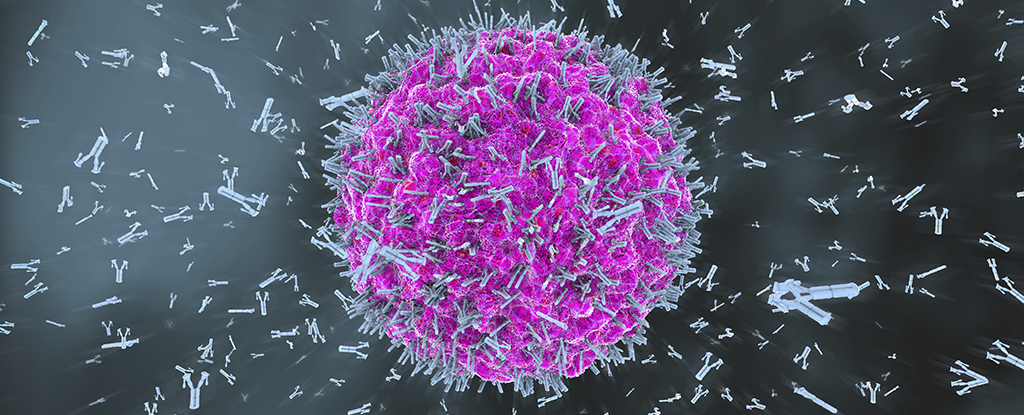Our immune system is talented at telling the difference between the chemistry of our own body and that of an invading pathogen. When it malfunctions, our body can become host to an intense civil war.
Scientists are keen to understand this in more detail, and a newly identified ‘switch’ that deactivates a sensor of foreign DNA may provide important insight.
A key part of this discovery, made by a team from the Swiss Federal Institute of Technology Lausanne, is an enzyme called cyclic GMP-AMP synthase (cGAS).
This protein is tasked with identifying infiltrating viruses. It binds to any foreign DNA floating out of place in a cell’s gooey cytoplasm and triggers a reaction alerting the body to an invader.
We already know that cGAS needs to be tightly regulated to keep it in check, especially once it enters a cell’s nucleus. The new study identifies a biological switch that marks the enzyme for deletion in places where no immune response is required.
“Along with previously defined interactions with nucleosomes, our results provide a complete structural model of the nuclear regulation of cGAS,” write the researchers in their published paper.
Scientists have established that as cells divide to grow, the nuclear envelope dissolves, giving cGAS easy access to the DNA bundled within. There, it binds to DNA packaging units called nucleosomes and is covered by a protein called BAF, waiting for when it might be needed.
In this study, via a detailed analysis of cells grown in the lab, the team identified a protein complex named CRL5–SPSB3 (the last acronym, we promise). It adds a chemical called ubiquitin to cGAS to mark it as disposable.
This is the key switch that kills off cGAS when it’s not needed – when there’s no threat from foreign DNA. Essentially, it stops the enzyme from attacking healthy cells by gently ushering it out of the picture as these cells grow.
Part of the signaling that controls the immune system response is called the interferon or IFN pathway, and the study shows how both cGAS and CRL5–SPSB3, which are responsible for flicking the switch one way or the other, are involved in IFN.
“These results demonstrate that nuclear cGAS levels affect the cellular IFN tone and reveal a role for CRL5–SPSB3 in cell-intrinsic immunity,” write the researchers.
Autoimmune disorders, such as type 1 diabetes and inflammatory bowel disease, happen when immune system controls don’t function as they should. The new research highlights one of those controls as worth studying further.
Now that we know more about how cGAS works, we might be able to develop effective ways of ensuring it’s always well-behaved.
“Our research defines protein degradation as a determinant of cGAS regulation in the nucleus and provides structural insights into an element of cGAS that is amenable to therapeutic exploitation,” write the researchers.
The research has been published in Nature.





